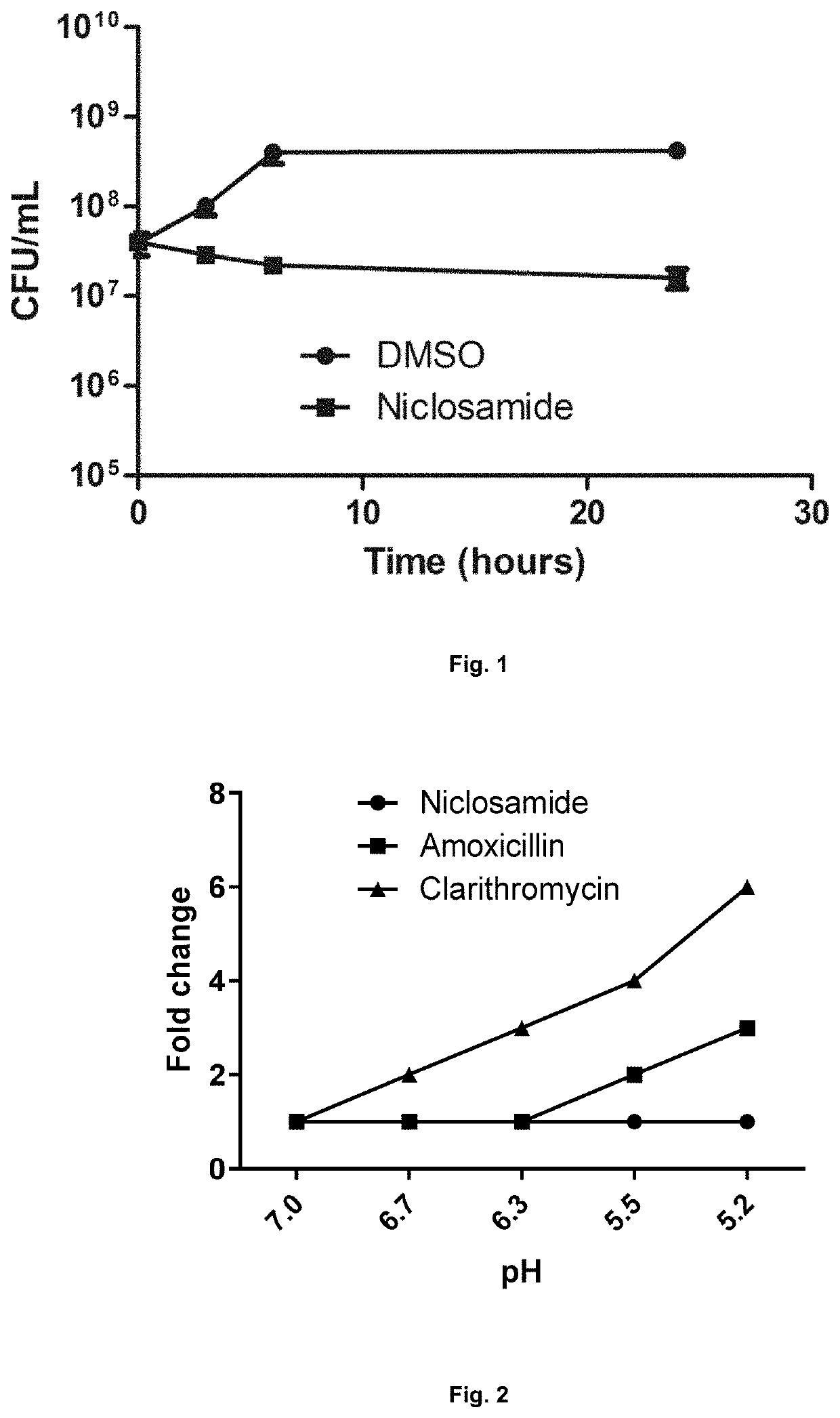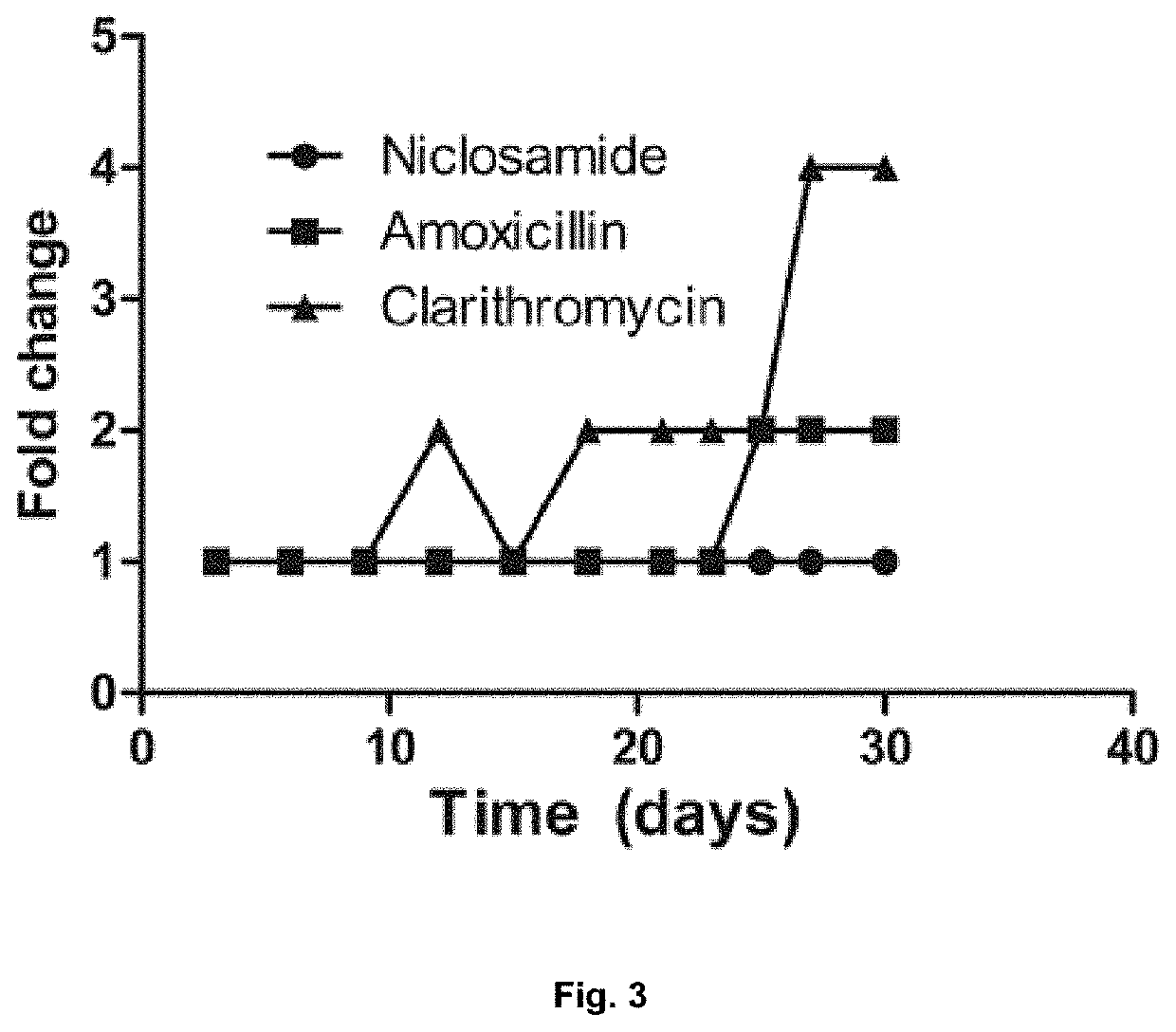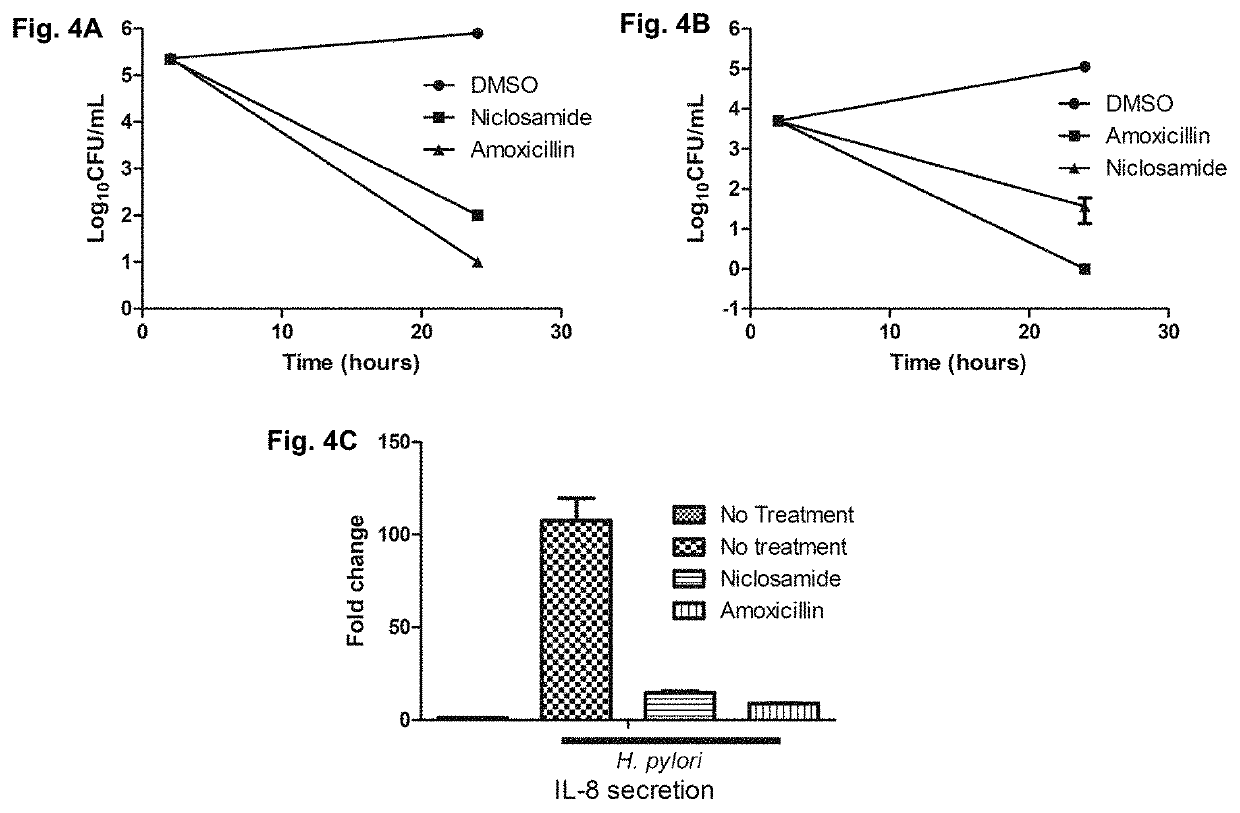Methods for treating diseases or infections caused by or associated with h. pylori using a halogenated salicylanilide
- Summary
- Abstract
- Description
- Claims
- Application Information
AI Technical Summary
Benefits of technology
Problems solved by technology
Method used
Image
Examples
example 1
rial Susceptibility
[0306]A pilot screening for anti-H. Pylori activity by a broth microdilution assay using the halogenated salicylanilides niclosamide, oxyclozanide rafoxanide and closantel.
[0307]The H. Pylori reference strain 60190 (ATCC 49503) was purchased from American Type Culture Collection (ATCC). Bacteria were cultured on Brucella agar (Becton Dickinson, Braintree, Mass., USA) supplemented with 10% fetal bovine serum (FBS; Gibco, Long Island, N.Y., USA) and H. Pylori selective supplement (vancomycin—10.0 mg / l, cefsulodin—5.0 mg / l, trimethoprim—5.0 mg / l, amphotericin B—5.0 mg / l) (Oxoid, Hampshire, UK) and maintained in humidified incubators at 37° C. under an atmosphere of 5% CO2.
[0308]In vitro antibacterial activity was tested using the broth microdilution assay (Wikler, M. A. Methods for dilution antimicrobial susceptibility tests for bacteria that grow aerobically: approved standard. (Clinical and Laboratory Standards Institute, 2006). Experiments were carried out in trip...
example 2
ill Assay
[0311]The MIC of niclosamide was the lowest of the halogenated salicylanilides tested (0.25 μg / mL against strain 60190, see Table 1). Niclosamide was therefore tested time to kill assays were used to confirm the killing properties of niclosamide against H. Pylori.
[0312]Agar grown H. Pylori bacteria (strain 60190) were suspended in fresh Mueller Hinton Broth (MHB) with 10% Fetal bovine serum (FBS) to a density of 109 cells / mL and placed into 10 mL tubes (BD Biosciences). Test compounds were then added at the 4×MIC and incubated with agitation at 37° C. under microaerophilic conditions. Aliquots were periodically drawn from the tubes, serially diluted and plated onto Brucella agar (BD Biosciences) supplemented with 10% FBS. CFUs were counted after a 3-day incubation and assays were carried out in duplicate.
[0313]Bacterial cells (109 / mL) exposed to the niclosamide at 4×MIC showed potent inhibition of the bacterial cell division relative to DMSO controls (FIG. 1) and shows tha...
example 3
pH on MIC
[0314]The broth microdilution assay described in Example 1 was used to demonstrate the stability of niclosamide, amoxicillin and clarithromycin at low pH using MHB supplemented with 10% FBS against H. Pylori (strain 60190). The pH was adjusted to acidic condition with 1 N HCl. The minimal bactericidal concentration (MBC) was determined by plating 5 μL of broth culture from the MIC assay onto Müller-Hinton agar (BD Biosciences) supplemented with 10% FBS. After 72 h, the lowest concentration at which colonies were not observed was reported as the MBC.
[0315]The antibacterial potential of niclosamide did not change in acidic pH (tested between pH 7.0 to 5.2) (FIG. 2). The MIC of niclosamide in low pH remained the same as in neutral pH (MIC 0.25 μg / mL) indicating that niclosamide is expected to retain activity in the low pH environment of the gastric mucosa. In contrast, the MIC of the standard antibiotics amoxicillin and clarithromycin increased at acidic pH.
PUM
| Property | Measurement | Unit |
|---|---|---|
| Density | aaaaa | aaaaa |
| Density | aaaaa | aaaaa |
| Density | aaaaa | aaaaa |
Abstract
Description
Claims
Application Information
 Login to View More
Login to View More - R&D
- Intellectual Property
- Life Sciences
- Materials
- Tech Scout
- Unparalleled Data Quality
- Higher Quality Content
- 60% Fewer Hallucinations
Browse by: Latest US Patents, China's latest patents, Technical Efficacy Thesaurus, Application Domain, Technology Topic, Popular Technical Reports.
© 2025 PatSnap. All rights reserved.Legal|Privacy policy|Modern Slavery Act Transparency Statement|Sitemap|About US| Contact US: help@patsnap.com



